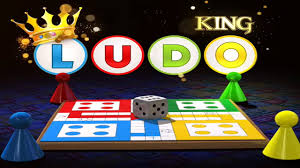# Creating Engaging Games with p5.js: A Comhensive Guide
## Introduction
p5.js is a powerful and userfriendly JavaScript library that simplifies creative coding for artists, designers, and developers. One of its most exciting applications is creating interactive games. Whether youre a beginner or an experienced coder, p5.js provides the tools to build engaging and visually appealing games. But how can you get started? What are the key concepts to master? This article explores these questions and offers a stepbystep guide to developing games with p5.js.
## What Are the Basic Requirements for a p5.js Game?
Before diving into game development, its essential to understand the foundational elements. A typical p5.js game requires:
A game loop: This ensures continuous rendering and interaction.
Player input: Handling keyboard, mouse, or touch inputs.
Game logic: Rules that dictate how the game progresses.
Visual elements: Sprites, backgrounds, and animations.
p5.js makes it easy to implement these components, but what specific functions should you use?
## How to Implement a Game Loop in p5.js?
The game loop is the heart of any interactive application. In p5.js, the `draw()` function serves this purpose, automatically running 60 times per second by default. Here’s a simple example:
“`javascript
function setup() {
createCanvas(800, 600);
}
function draw() {
background(220);
// Game logic here
}
“`
But how do you add complexity? For instance, how can you introduce player movement or collision detection?
## Handling Player Input
Player input is crucial for interactivity. p5.js provides several functions to detect inputs:
`keyPressed()`: Triggers when a key is ssed.
`mousePressed()`: Activates on mouse click.
`touchStarted()`: Useful for mobile devices.
Example:
“`javascript
function keyPressed() {
if (key === w) {
player.y = 10;
}
}
“`
But what about more advanced controls, like a virtual joystick? Can p5.js handle that?
## Creating Game Elements with Sprites and Animation
Visuals enhance the gaming experience. p5.js allows you to load images and animate them. Here’s how to display a sprite:
“`javascript
let player;
function setup() {
createCanvas(800, 600);
player = createSprite(400, 300, 50, 50);
player.addImage loadImage(player.png);
}
function draw() {
background(220);
drawSprite(player);
}
“`
But how do you ensure smooth animations? What about sprite sheets?
## Adding Game Logic and Mechanics
Game logic determines how the game behaves. Common mechanics include:

Scoring: Tracking player performance.
driven obstacles.
Levels: Progressing through game stages.
Example:
“`javascript
let score = 0;
function draw() {
background(220);
if (collideRectCircle(player.position.x, player.position.y, player.width, player.height, enemy.position.x, enemy.position.y, enemy.width)) {
score = 1;
}
}
“`
But how do you balance difficulty and keep players engaged?
## Sharing Your p5.js Game
Once your game is complete, sharing it with others is easy. You can:
Embed it on a website: Use the “ tag to include your p5.js sketch.
Publish on platforms like p5.js web: Simplifies sharing and showcasing your work.
Example:
“`html
“`
Many developers also share their games on social media or coding forums, fostering a community of creativity.
## Conclusion
Creating games with p5.js is an accessible and rewarding experience. By understanding the game loop, handling inputs, and implementing core mechanics, you can build imssive projects. Whether youre experimenting with simple puzzles or complex simulations, p5.js offers the flexibility to explore your ideas.
If you have a p5.js game you’re proud of, consider sharing it with the community! The p5.js forums and GitHub repositories are great places to showcase your work and inspire others. Happy coding!

